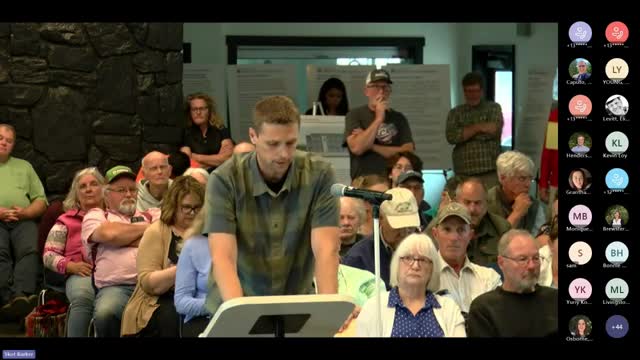Concerns rise over environmental risks of lithium battery facility
August 15, 2024 | Energy Facility Site Evaluation Council, Governor's Office - Boards & Commissions, Executive, Washington
This article was created by AI summarizing key points discussed. AI makes mistakes, so for full details and context, please refer to the video of the full meeting. Please report any errors so we can fix them. Report an error »

In a recent government meeting, concerns were raised regarding the proposed Golden Eye Energy Project, particularly its potential environmental and safety risks associated with lithium-ion battery fires. Experts highlighted that extinguishing a single electric vehicle (EV) fire could require up to 10,000 gallons of water, and with projections of 4,000 EVs potentially involved in a fire at the facility, the water needed could reach an alarming 40 million gallons. This raises significant concerns about runoff contaminating local waterways, including the Skagit River.
Fire incidents at similar facilities in California were cited, where extensive evacuations and prolonged firefighting efforts were necessary due to the unpredictable nature of battery fires. One incident in San Diego required 60 firefighters and lasted 17 days due to reignition issues, while another in Ote Mesa consumed nearly 20 million gallons of water for suppression efforts.
Community members expressed fears about the facility's proximity to populated areas, schools, and critical water sources. They questioned the adequacy of emergency response plans and the potential for environmental contamination from lithium battery fires, which can release hazardous materials like hydrogen fluoride.
Supporters of the project, including local labor representatives, argued that it would provide significant economic benefits and contribute to the region's clean energy goals. However, opposition remains strong, with critics emphasizing the risks to public safety and the environment, particularly in agricultural and residential zones.
As discussions continue, the community is left grappling with the balance between advancing clean energy initiatives and ensuring the safety and well-being of local residents and ecosystems.
Fire incidents at similar facilities in California were cited, where extensive evacuations and prolonged firefighting efforts were necessary due to the unpredictable nature of battery fires. One incident in San Diego required 60 firefighters and lasted 17 days due to reignition issues, while another in Ote Mesa consumed nearly 20 million gallons of water for suppression efforts.
Community members expressed fears about the facility's proximity to populated areas, schools, and critical water sources. They questioned the adequacy of emergency response plans and the potential for environmental contamination from lithium battery fires, which can release hazardous materials like hydrogen fluoride.
Supporters of the project, including local labor representatives, argued that it would provide significant economic benefits and contribute to the region's clean energy goals. However, opposition remains strong, with critics emphasizing the risks to public safety and the environment, particularly in agricultural and residential zones.
As discussions continue, the community is left grappling with the balance between advancing clean energy initiatives and ensuring the safety and well-being of local residents and ecosystems.
View full meeting
This article is based on a recent meeting—watch the full video and explore the complete transcript for deeper insights into the discussion.
View full meeting
